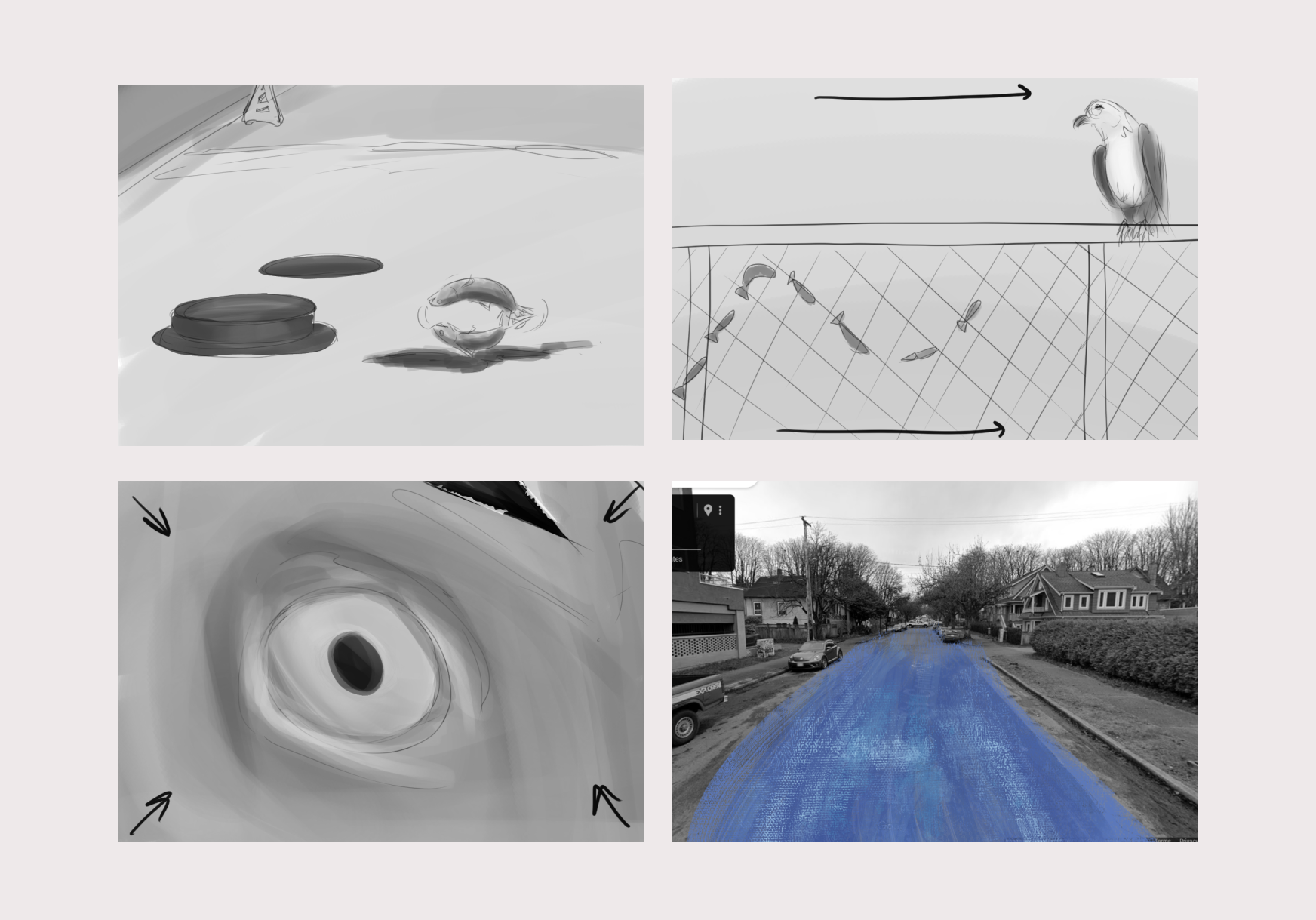Video Poem

The Video Poem
'Take a St. And’ is a poem written by Rita Wong that sheds light on the hidden and covered up salmon streams in the St. George neighborhood. My group at I, for a school project, filmed and animated a video poem inspired by the poem. We planned shots based on an audio recording by Rita Wong reading the poem. We combined video footage and 2D animation to create our final video poem.
My Work
I designed some of the storyboards and ideated, with my team, the series of shots and filming locations. I filmed many of the shots as well. I also animated all of the creatures, including the eagle and fish. Lastly, I was a video editor during post production.
The Direction
The poem ‘Take a St. And’ is very somber and thoughtful, so we wanted our video to help the audience feel that. We wanted slow-paced and easy-to-digest shots, while still including eye-catching visual effects through animal, water, and text animations.
My Roles
Animator, videographer, editor, storyboard artist.
In collaboration with:
Semi Chan
Sabrina Fong
Vincent Sam